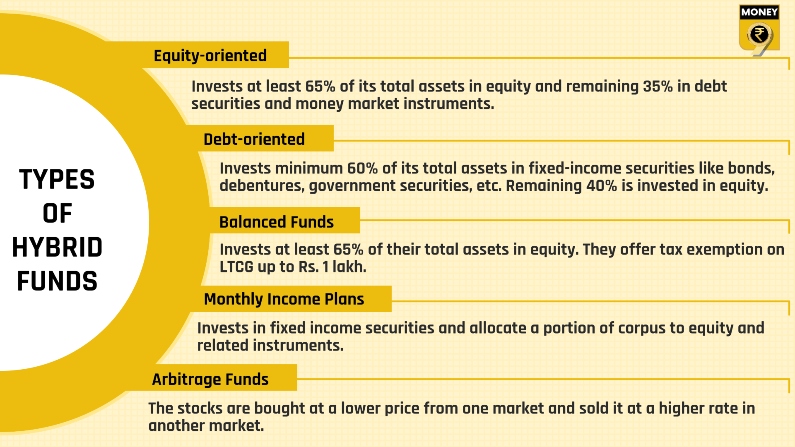Mutual Funds: What makes hybrid funds so popular?
Since March 2020, the asset under management (AUM) of hybrid funds have risen by 31% to Rs 3.42 lakh as of March 2021
- Noopur Praveen
- Last Updated : August 5, 2021, 17:55 IST

Unlike most situations when you’d prefer pure over hybrid, mutual fund investors may follow a different rule book. A hybrid fund is characterised by diversification in two or more asset classes. These types of funds invest in a mix of equity and debt investments. It is also known as an asset allocation fund. To meet the specific investment objective of each portfolio, hybrid funds follow a different combination of stocks and bonds. But why is it becoming a prevalent choice amongst investors? The reason is simple – it offers you a chance to enjoy the best of both worlds by creating a rather valuable proposition from whatever is available.
“Generally when you combine two asset classes and try to bring down the volatility without return coming down commensurately, it makes hybrid asset class popular. One other reason for current popularity could be lofty stock markets,” said Dwijendra Srivastava, CFA and chief investment officer – debt at Sundaram Mutual.
Why are hybrid funds attractive?
New investors are naturally risk-averse. While equity or debt alone may scare them at first sight, hybrid funds tend to have a more balanced approach. It will allow investors to make the most out of equity markets as debt bonds give them much-needed stability against extreme rushes of volatility in the market. In fact, hybrid funds also allow investments in gold and international equity in certain cases. You can literally cherry-pick your bets from various asset types and give them enough time to prosper.

Since March 2020, the asset under management (AUM) of hybrid funds has risen by 31% to Rs 3.42 lakh as of March 2021. While hybrid funds are known as the funds for all seasons, what could be the potential trigger for this spike in popularity?
Hybrid funds for conservative investors
“With debt funds underperforming, the conservative investors who had to move a notch up on the risk profile, would have preferred a debt hybrid fund to get a flavour of equity without the high risk associated with it. Similarly equity mutual fund investors, who at some point in this ongoing rally opted to encash their gains but needed to park in an instrument which would continue to provide an equity exposure partially, in case the rally continues contrary to the expectations,” said veteran market analyst Ambareesh Baliga.
Another important aspect to understand the popularity of hybrid fund is its diversification options. This minimises the possibility of a steep loss due to a particular asset class having a rough day or season.
Diversification is the key
“The fund manager can reduce exposure of the under-performing asset class and increase exposure to the outperforming one subject to a threshold, the flexibility of which is not available to a fund manager of an asset class specific fund,” Baliga explained.
For example, for a debt hybrid fund, the fund manager can reduce the exposure of equity from a maximum of 25% to 5% to limit equity losses whereas an equity fund manager can’t sit on a large cash balance when the equity markets start correcting big.
Investment requires time
A combination of multiple asset classes always tends to give superior returns that a portfolio exclusively dependent on equity returns. But having said that, any mutual fund investment demands enough time period to flourish and give expected returns. An average duration of 3-5 years in a hybrid fund can well be a good starter for your future financial goals.
Download Money9 App for the latest updates on Personal Finance.
Related
- Budget’24: New LTCG rule to hit long-term property owners hard
- Looking to buy gold? Buy now before it’s too late!
- Budget 2024: What is NPS ‘Vatsalya’ scheme? How to apply & other benefits?
- Budget’ 24: Startup ecosystem all smiles with scrapping of angel tax
- Budget’24: New NPS scheme for minors launched, here’s how you can benefit
- Budget’24: Gold, silver prices to soften soon, customs duty drops to 6%

